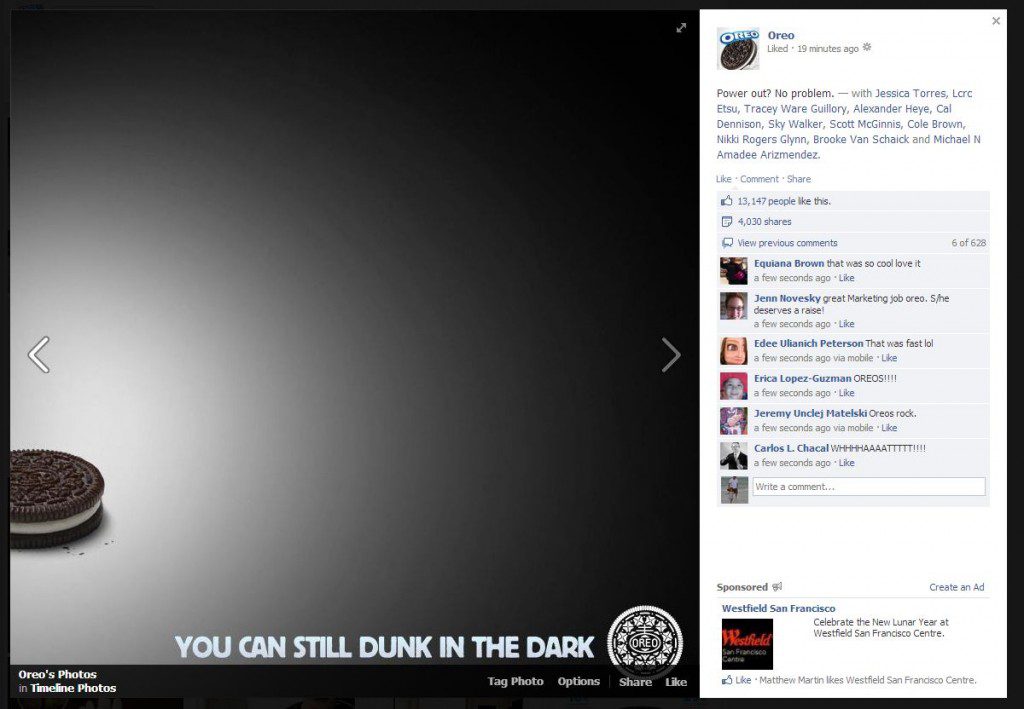
When I started working on Stand Out: The Content Marketing Guide for Entrepreneurs, I didn’t realize how many businesses were struggling with content marketing. As I researched for case studies and examples of brands doing it well, I quickly uncovered some big content marketing mistakes along with some consistent actions that drove success.
After much consideration, I looked at some of these findings and quickly started to understand some of the things that should never be done in content marketing. Additionally, I started to also recognize what needs to be done if you’re looking to find success. From that, the 8 commandments of content marketing were born.
These eight commandments are meant to help and empower brands and marketers to do what’s right. It’s meant to help them in achieving success and ultimately driving both meaningful and measurable results. While these commandments are written with content marketers in mind, some of these principals can transcend into other industries just the same. Check them out:
1. Thou Shalt Not Create Content Solely for Search
What happened when the SEO expert walked into the pub, bar, nightclub, cabaret, liquor store, grill, irish house, restaurant…See what I did there?
It’s called keyword stuffing and it’s against the first commandment of content marketing.
Don’t write your content with the sole intent of tricking Google into believing that the content you’re creating deserves to be at the top of the search results. Instead, write your content with the intent of offering value to your target audience and existing readers. Great content speaks for itself and will drive traffic on its own merit. Sure, creating a quality headline based on keyword research has its place, but you don’t need to stuff your post with keywords that diminish the value of your content.
2. Remember Your Goals and Stick to Them
A lot of business make the mistakes of creating content without an end goal. When you write a blog post, create a slideshow, build an infographic or publish an ebook – there always needs to be a goal in mind. For example, if you’re a startup that is trying to increase awareness, building a blog post that sounds like every other blog post isn’t going to help you. Thus, it’s important to craft content that will turn heads and sometimes goes against the norm by introducing a new topic or thought to the world.
Goals are the foundation in which every content marketing strategy should be made. Identify your goals and use them to determine not only what type of content you’re going to create but also the story that is told within each piece of content. When you do this, you not only are in a better position to achieve success but also in a better spot to create content and blog posts worth sharing.
3. Honor Thy Brand With Unique & Compelling Stories
When you look at businesses who have truly stood out with their content marketing efforts, the ones who we think about are the ones who changed the game. It’s the ones who didn’t try to imitate other brands, it’s the ones who created their own path instead of following the one most travelled (tweet this).
When Mint.com started creating infographics that were filled with facts and stats about personal finance, it was a first. The infographics ranged from insights surrounding real estate and mortgages to the amount of money being spent around the world on valentines day. The key to success for Mint.com was the deliver of infographics that truly added value to the lives of their target audience.
Another example of a brand that focused on creating value through unique and compelling stories is OkCupid.com. The folks at OkCupid truly changed the game with their approach to content as they were one of the first brands to use Big Data directly from their product and use it to share insights that would be spread due to their provocative nature and value. For example, they created a study on The Case For An Older Woman and How Your Race Affects The Messages You Get. Each of these posts drove more than 700 comments and coverage on channels outside of their own blog.
4. Search Out Quality Stats and Research for Content
When you create a post that provides people with information they’ve never seen before, they’re more likely to share it. Thus, going out of your way to find quality stats and research to enhance your content is a great way to make it appear more trustworthy and valuable. Beyond just using raw data, you can look to industry experts for quotes and stats to further validate any of your points or thinking.
One brand that has done a consistently great job at delivery high quality stats is the folks at Moz. On a regular basis you can find content being shared by Moz contributors, influencers and community members that are filled with transparent data and insights. Sometimes the data is directly from an influencer working with Google and other times it’s quality research done that is then turned into a case study for members to learn from.
5. Thou Shalt Not Be Indifferent With Your Brand
A brand cannot stand on the fence. You need to stand up for something and let that message shine through in your content. It’s not enough to sit up on your high horse and express that you “think” your product is going to change the world – You need to know it. You need to know the value that your product offers and know what your product or service can offer customers that your competition cannot.
Brands cannot be indifferent to audience in which they are marketing to. You need to care about your customers enough to understand their wants, needs and challenges. You should care about these people, you should want to bring them delight through stories and offer them content that truly helps them develop and grow. Being indifferent is not an option.
6. Thou Shalt Not Create Stale Content
I’ve talked about the idea of reactive storytelling in the past and it’s a topic that is still driving success for many brands around the world. The idea of reactive storytelling is quite simple. It’s the act of combining a top of mind story with a relevant brand marketing message. For example, during the 2012 Super Bowl, the lights went out after half time and millions of people went to social media to chat about the blunder. As these users chatted with friends, one brand cut through the noise with this simple post:
The image above shows you a Facebook status that has generated over 600 comments and 4000 shares. Today, that post was viewed more times than the average super bowl ad and was talked about for months after going live. In fact, a quick google search for “Oreo Superbowl” will give you results from hundreds of media channels that wrote about this quick response and described it as “brilliant” and “marketing genius.”
7. Content Intelligence Leads To Content Excellence
It’s a simple one but it’s one that every content marketer should remember. Content intelligence is the gateway to content excellence. Gather as much insight and intelligence about your industry and target audience as possible before creating content. Study their content consumption habits and keep your finger on the pulse of what content they’re more likely to share and consume.
To start with, you could set up a Google Alert to ensure that when someone is talking about your brand you’re in the loop. This simple action can save you both headaches and missed opportunities for engaging with an audience that could be a customer or brand ambassador. In both cases, it’s important to see what people are saying about you and jumping into the conversation when appropriate.
8. Thou Shall Not Create Content And Not Promote it
You create content to influence others. Whether it’s to influence potential investors, existing clients or targeted prospects – you’ve invested in this content with the intent of influencing something. Influencing them to buy, influencing them to share or influencing their perception. Influence is goal.
Sometimes a brand creates a slideshow to sell their product, sometimes they create a blog post to build a deeper relationship with their clients and sometimes they create infographics just to generate awareness. One way or another, when you have a goal for your content, it’s important to promote it. Not promoting your content is a huge disservice to your brand and efforts.
There are hundreds of different ways to promote your content and get it in front of your audience. You can use Facebook, Twitter, LinkedIn, Pinterest, Quora, Medium, Reddit, Quibb, Slideshare and many more channels to get your story heard. The only thing holding you back is the person reading this screen right now. The opportunity to spread your content is on you. The choice is yours. Let it sit or let it shine.
I’ve said it before. Content isn’t King – Distribution is. Here’s a deck I put together that highlights that exact point:
If you follow everything that I mentioned above, you’ll increase your odds of creating a quality content marketing strategy. I myself used to be very blind in my content marketing efforts and struggled to consistently drive results. Once I followed the above steps, I seen an increase in traffic to my clients content along with an increase in the results as it relates to specific metrics.
The one thing we could also to the eight commandments is the importance of making it easy to share your content. If you enjoyed this post, it’s very easy to share. Click any of the share icons on the side and you’re off to the races!
Is there anything else you could add to the content marketing commandments?
(Photo from Flickr CC by pasukaru76)

